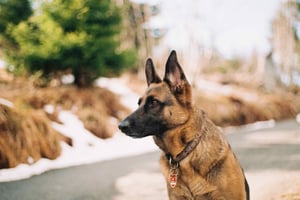Training a dog to sit can be a difficult task for many pet owners. However, with the right...
How to Stop a Dog From Jumping On You
Training a dog not to jump can be a difficult task, but with patience and consistency it can be done. In this article, we will discuss how to get a dog from jumping on you, including tips and tricks to make the process easier. We will also go over the different methods of training, such as positive reinforcement and redirection, and the importance of consistency in order to get the desired results. By the end of this article, you will have the tools and knowledge to stop your dog from jumping on you and others.
Why Dogs Jump
Dogs jump for a variety of reasons, such as excitement, attention, and even fear. It is important to understand why your dog is jumping in order to determine the best way to stop them. For example, if your dog is jumping out of excitement, then you will need to find ways to redirect their energy into something more appropriate. However, if your dog is jumping out of fear, then it is important to address the underlying cause of the fear first.
In addition, it is important to understand that jumping is a natural behavior for dogs, so it is important to be patient and consistent when trying to train them not to do it. It is also important to remember that dogs can only be expected to learn and remember so much in one day, so it is important to take your time with training and not to rush the process.
Positive Reinforcement Training
Positive reinforcement is one of the most effective methods of training a dog not to jump. This method focuses on rewarding good behavior while ignoring or redirecting bad behavior. For example, if your dog jumps up on you, you can ignore them and wait for them to sit. Once they are sitting, you can reward them with a treat or verbal praise. Over time, your dog will learn that sitting is the behavior that will get them the reward, and not jumping.
This method is effective because it reinforces the behavior that you want your dog to do, instead of punishing them for the behavior that you don’t want. It is also important to remember that you should only reward your dog when they do the behavior that you want, and not when they stop the behavior that you don’t want. This will help your dog to understand what behavior is expected of them.
Redirection Training
Redirection training is another effective method of training a dog not to jump. This method focuses on redirecting your dog’s energy into something more appropriate. For example, if your dog jumps up on you, you can redirect their energy by asking them to sit or lie down. You can also give them a toy or a treat to focus their attention on something else.
This method is effective because it helps to redirect your dog’s energy away from the behavior that you don’t want. It is also important to remember to reward your dog when they do the behavior that you want, such as sitting or lying down. This will help your dog to understand what behavior is expected of them.
The Importance of Consistency
No matter which method you choose to use, it is important to be consistent with your training. Dogs learn best when they are given clear expectations and consistent reinforcement. If you are inconsistent with your training, your dog may become confused and the training will not be effective. It is also important to remember to be patient with your dog and not to expect too much too soon.
In addition, it is important to remember that training a dog not to jump takes time and patience. It is not something that you can do overnight and it is important to be consistent and patient with your dog in order to get the desired results.
Conclusion
In conclusion, training a dog not to jump can be a difficult task, but with patience and consistency it can be done. By understanding why your dog is jumping and using positive reinforcement or redirection, you can teach your dog not to jump on you and others. It is also important to be consistent with your training and to be patient with your dog in order to get the desired results. With the right tools and knowledge, you can stop your dog from jumping on you and others.



